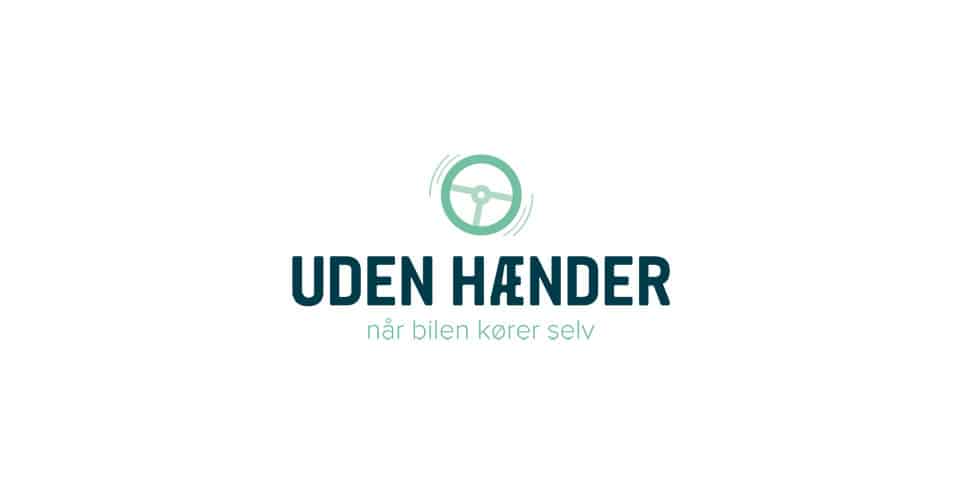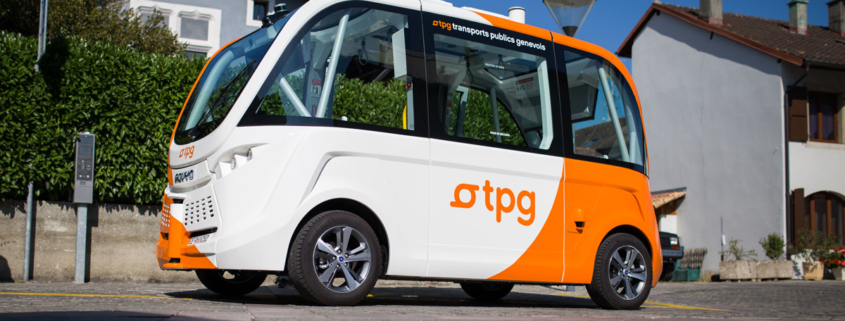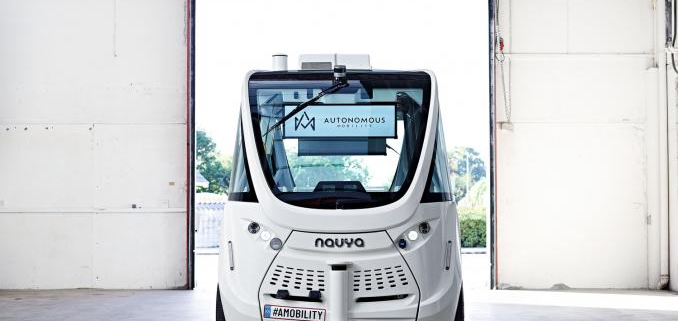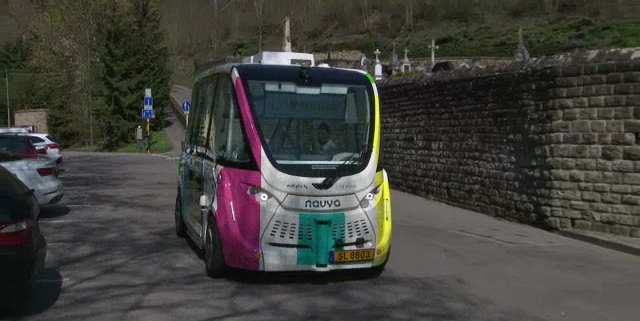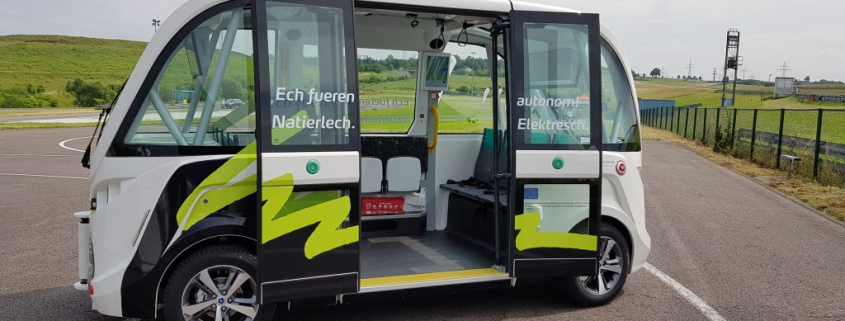Dr news TV show
/in Copenhagen, Holo, TV / Radio / Video /by Dimitri KonstantasSource: DR news
Date: 03.07.2019
Dr News TV show
/in Copenhagen, Holo, Non classé, TV / Radio / Video /by Dimitri KonstantasSource: DR news
Date: 01.07.2019
Sådan kører de selvkørende busser i Gøteborg
/in Copenhagen, Holo, Media coverage, Video /by Dimitri KonstantasLancement officiel du premier véhicule autonome sur le réseau des transports publics genevois
/in Announcement, Geneva, Press release, TPG /by Anne-Christine DussGrand-Lancy, le 17 septembre 2018
Les transports publics genevois (tpg) ont inauguré le lundi 17 septembre 2018, en présence des autorités, la ligne XA, dont le service est désormais assuré par un véhicule autonome. Son parcours permet de relier la gare ferroviaire de Meyrin au réseau des tpg.
Les Transports publics genevois (tpg) ont procédé le lundi 17 septembre 2018 à la mise en service officielle de la ligne XA sur le réseau des tpg. Le service de cette ligne est assuré désormais uniquement par un véhicule autonome.
Television news
/in Lyon, Media coverage, TV / Radio / Video /by Anne-Christine DussSource : Youtube
L’Issep vandalisée – le Sytral teste sa navette autonome – Le Pathé Bellecour innove avec un écran led – Le conseil municipal vote la fermeture de la maternelle Levi Strauss – Bruno Genesio bientôt fixé sur son avenir
De 5G-Reseau wäert an Zukunft zu Lëtzebuerg ëmmer méi eng grouss Roll spillen
/in Luxembourg, Media coverage, TV / Radio / Video /by Anne-Christine DussSource : RTL
D’Lëtzebuerger Regierung ass gewëllt, Investissementer a seng digital Infrastrukturen ze maachen, fir een Haaptacteur am Secteur ze ginn.
Ënnert anerem dës Elementer ginn aus der Äntwert vum Wirtschaftsministère an deem vum Transport op eng parlamentaresch Fro vun der CSV-Deputéierter Viviane Reding ervir. Déi hat sech och iwwer en Site informéiert, op deem Lëtzebuerg zesumme mat Däitschland a Frankräich, dat autonoomt Fueren teste wëll.
Sustainable Mobility Hackthon
/in Announcement, Geneva /by Dimitri KonstantasJoin the Sustainable Mobility Hackthon, in Geneva 13 and 14th of June 2019: make mobility more sustainable.
The challenges will incorporate autonomous driving, clean energy, inclusive mobility and more. In two days, no matter what you decided to do, your group will have to show some progress on the chosen challenge.
For who?
It’s a public event, open to anyone passionate about the topics, whether you are a student, professional or a retiree.
What are the challenges?
- How might we reduce the environmental footprint of corporate vehicle fleets in Geneva? (SIG)How to reuse the energy spent on braking with an electric car? (AKKA Research)
- High precision navigating system to improve the urban mobility of blind and impaired people. (The University of Geneva)
- How to use bike sharing to develop a collaborative application showing the live air pollution map of Geneva? (Geneve Roule & The University of Geneva)
Register at https://www.eventbrite.com/e/sustainable-mobility-hackathon-tickets-61791116894
Des navettes autonomes pour Sales-Lentz
/in Magazine, Media coverage, Sales-Lenz /by Anne-Christine DussSource : link 2fleet
La société Sales-Lentz, spécialisée dans le transport de personnes, a acquis 2 navettes se déplaçant sans conducteurs qui seront mises en service courant septembre.
Dans le but d’assurer un tronçon non desservi et consistant d’environ 5 km, la société a en effet commandé des navettes n’ayant nul besoin de pilote, de volant, ou de pédales de freins. La commune qui sera la destination du nouveau moyen de transport n’a cependant pas encore été révélée.
New Scientific Article: A Study on Security and Privacy Guidelines, Countermeasures, Threats: IoT Data at Rest Perspective
/in EU, News, Research, Université de Genève /by Dimitri KonstantasAbstract: The Internet of Things (IoT) makes our lives much easier, more valuable, and less stressful due to the development of many applications around us including smart cities, smart cars, and smart grids, offering endless services and solutions. Protecting IoT data of such applications at rest either on the objects or in the cloud is an indispensable requirement for achieving a symmetry in the handling and protection of the IoT, as we do with data created by persons and applications. This is because unauthorised access to such data may lead to harmful consequences such as linkage attacks, loss of privacy, and data manipulation. Such undesired implications may jeopardise the existence of IoT applications if protection measures are not taken, and they stem from two main factors. One is that IoT objects have limited capabilities in terms of memory capacity, battery life, and computational power that hamper the direct implementation of conventional Internet security solutions without some modifications (e.g., traditional symmetric algorithms). Another factor is the absence of widely accepted IoT security and privacy guidelines for IoT data at rest and their appropriate countermeasures, which would help IoT stakeholders (e.g., developers, manufacturers) to develop secure IoT systems and therefore enhance IoT security and privacy by design. Toward this end, we first briefly describe the main IoT security goals and identify IoT stakeholders. Moreover, we briefly discuss the most well-known data protection frameworks (e.g., General Data Protection Regulation (GDPR), Health Insurance Portability (HIPAA)). Second, we highlight potential attacks and threats against data at rest and show their violated security goals (e.g., confidentiality and integrity). Third, we review a list of protection measures by which our proposed guidelines can be accomplished. Fourth, we propose a framework of security and privacy guidelines for IoT data at rest that can be utilised to enhance IoT security and privacy by design and establish a symmetry with the protection of user-created data. Our framework also presents the link between the suggested guidelines, mitigation techniques, and attacks. Moreover, we state those IoT stakeholders (e.g., manufacturers, developers) who will benefit most from these guidelines. Finally, we suggest several open issues requiring further investigation in the future, and we also discuss the limitations of our suggested framework.
A Study on Security and Privacy Guidelines, Countermeasures, Threats: IoT Data at Rest Perspective
Hezam Akram Abdulghani, Niels Alexander Nijdam, Anastasija Collen, Dimitri Konstantas
Journal: Symmetry
Date: 10 June 2019, DOI: 10.3390/sym11060774
Download: Publisher’s version (Gold Open Access)
Demonstrator & Replicator sites
SUBSCRIBTIONS ARE NOW CLOSED
Contact
Prof. Dimitri KONSTANTAS
Full Professor
Information Science Institute – Director
AVENUE projet Coordinator
Uni Battelle – Office 236
University Of Geneva
Route de Drize 7
1227 Carouge
Switzerland
EU PROGRAM
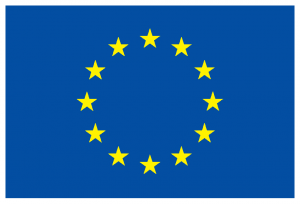
This project has received funding from the European Union’s Horizon 2020 Research and Innovation Programme under grant agreement no 769033.


